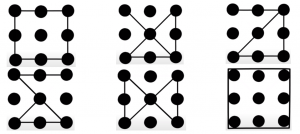What to do in a country with a complex administrative structure, such as Bosnia and Herzegovina, in situations where the jurisdictions for making certain policies are at the entity level, and in the process of joining the European Union there are requirements for a unified country-wide approach? What if, to make things worse, there is a lack of political will to establish effective joint coordination, or a coordination mechanism is in place that does not work?
Complex situations cannot be solved in a simple way. That is inherent to their nature. They contain contradictory requirements for which the smallest common denominator cannot, or very rarely can, be found. Attempts to solve them often, in our Balkan, and Bosnian, version, follow the logic of zero-sum games, where the gain of one side is at the same time the loss of the other. Most often it is such a perception of at least one of the parties, probably the one who can “lose” something with the solution. The cultural, political and other conditions are clearly not yet mature for the transition from a competitive to a cooperative logic of the win-win situation, in which both sides win. There is not enough mutual trust. Mutual mistrust dominates. And things with (dis) trust are difficult and slow to change.
The European Commission’s 2021 Report on Bosnia and Herzegovina[1] often points to a lack of a country-wide strategy, policy or law in certain areas, for example:
- Regarding enterprise and industrial policy principles, Bosnia and Herzegovina still lack a countrywide industrial development strategy as well as a state-level body promoting consistency between industrial strategies and coherence with other policies affecting industrial competitiveness.
- Regarding employment policy, there is still no countrywide employment strategy in place.
- Regarding information society services, Bosnia and Herzegovina made no progress in adopting a countrywide strategy and action plan for the development of the information society.
And so on, not to mention more. Those who follow the annual reports of the European Commission on BiH more closely know that such statements are repeated from year to year, without any encouraging progress in fulfilling such defined requirements, but also without trying to break the vicious circle. And the “vicious circle” represents the gap between the competencies defined by the Constitution, on the one hand, and the demand for unified solutions, in order to fit into the European perspective, on the other hand. All of this is sometimes reminiscent of a bureaucratically stereotypical, uncreative solution to a familiar problem that requires all nine dots to be connected using four straight lines, without lifting the pen and without retracing your path.

Faced with such a task, people usually react mechanically, connecting the dots in a way that seems direct and/or easiest to them. Some first connect all the boundary points, others try to immediately cover the inner point, the third try both … The most common failed examples of solving are shown below. Either one point is surplus, or one more line is needed. The reason for the failure to solve is shown in the last picture: most people impose a constraint that does not exist, by imagining that the lines must remain within the imaginary framework that makes up these nine points. However you try, it is not possible to reach a solution within such a constrained framework.

Similarly, there is no solution to the “squaring of the circle” of Bosnia and Herzegovina, stretched between the distribution of jurisdictions within the country and the requirements arising from the EU accession process. It is difficult to expect a transfer of jurisdictions between levels of government in the country, just as it is equally difficult to expect the EU to make an exception for BiH.
If there is no foothold in the jurisdictions (no superiority at the state level), and coordination does not work (no readiness), then what is the way to achieve a sufficiently unified approach in terms of domestic policies in the process of accession to the European Union?
In the next few articles, we will try to offer a path to a solution that is different from the paths used so far, and leads to solutions that are somewhat different from the expected (read: given) solutions. Because Bosnia and Herzegovina is different from the countries with which it is in the same process, the path to a solution and the solutions that can be reached cannot be the same as in those countries. For things that are complex by their nature, the biggest mistake is when you ignore their context and try to solve them in the way that seems easiest and/or direct.
In short, we will try to show that the initial “stalemate” situation from the beginning of this article is not unsolvable and that there is an approach that can be effective, taking into account the internal contradictions of the problem and the specifics of the context in which it occurs. It is a “less frequent” path, because it requires a good knowledge of the terrain you are on, patience, tolerance for ambiguity and sensitivity to the complexity of the situation you are dealing with.
To be continued …
[1] European Commission – Bosnia and Herzegovina Report 2021: https://ec.europa.eu/neighbourhood-enlargement/bosnia-and-herzegovina-report-2021_en
Drawings used to illustrate the Nine-Dots problem are from „Managing for Creativity: Lessons from the Nine-Dot Problem“ – https://www.youtube.com/watch?v=5jtEJqQ3_Co








